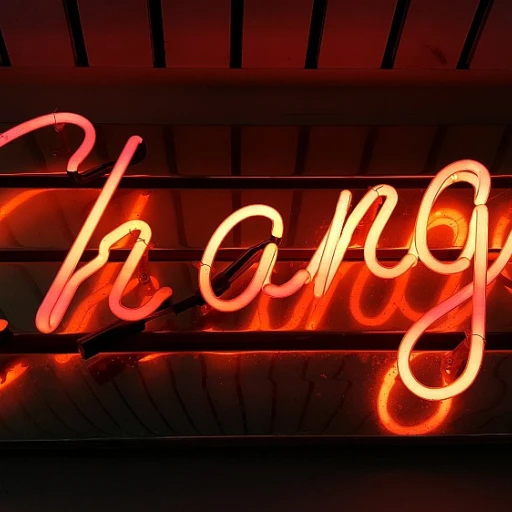
The Role of Group Norms in Workplace Culture
The Significance of Norms in Fostering a Cohesive Environment
Understanding the role of norms within a workplace can significantly impact the culture of an organization. Group norms, typically unwritten rules, govern how team members interact, make decisions, and collaborate. These norms help shape team dynamics and contribute to team success by setting a foundation for acceptable behavior among group members. Within any team, norms are key to creating clear expectations and guiding team behavior. For instance, communication norms establish a framework within which team members can openly share ideas during meetings, ultimately enhancing collective decision making. When teams understand and follow these norms, they can operate more efficiently over time. However, norms are not set in stone. They evolve as leaders and team members continually learn from each other. Leaders play a crucial role in establishing and reinforcing social norms that can help in conflict resolution. They guide teams in fostering an effective team culture by carefully monitoring group dynamics. Effective team norms promote a sense of belonging, facilitating better engagement of team members and fostering a positive work environment. They also help within team-building initiatives, aiding individuals in understanding their roles and responsibilities. For more information on building effective workplace networks, you can explore this enhanced communication guide. The intricate dynamics of group norms are integral to understanding how teams function. By setting a standard for behavior, they guide people in focusing on collective goals. As teams work together, norms become an implicit part of their everyday interactions, thereby playing a pivotal role in overall team performance.Communication Strategies to Address Group Norms
Breaking Down Group Norms Through Clear Communication
When aiming to address group norms, a clear understanding of the implicit and explicit norms within a team is essential. These norms can often influence team dynamics, decision making, and overall team performance. Effective team leaders must strive to establish communication strategies that provide clarity in norms to help guide team members.
One of the most important steps in addressing norms is having open discussions during team meetings. This enables every team member to voice their thoughts and concerns about existing norms and their impact on team success. By creating a space where people feel safe to express themselves, leaders can learn how certain norms relate to both positive and negative outcomes within the team.
Another key communication strategy is to set and model the desired norms as leaders. Leaders should embody the norms they want to encourage among team members. By doing so, members are more likely to adopt these practices themselves, promoting a cohesive work environment.
Communication norms also play a significant role in shaping how group members interact with one another. Establishing clear channels for communication and conflict resolution can effectively help in mitigating misunderstandings and fostering an atmosphere of mutual respect.
To ensure these strategies are effectively communicated, it's beneficial to employ tools that continuously monitor and evaluate the efficacy of established norms. For a more comprehensive understanding of enhancing team dynamics with effective communication, visit Enhancing Workplace Dynamics.
Challenges in Altering Established Group Norms
Overcoming Hurdles in Changing Established Group Norms
Altering established group norms within a team environment can often present significant challenges. Over time, teams develop their own set of behaviors that can become deeply ingrained and difficult to modify. These implicit norms, which are often unspoken, influence the way team members interact, communicate, and perform their tasks. Understanding these dynamics is essential for leaders aiming to implement change.
The first challenge in addressing these entrenched norms is resistance from team members. People tend to be creatures of habit, and introducing changes to established communication norms can meet with pushback. Team leaders need to be proactive in engaging their members, explaining the benefits of new processes and how they can positively impact team dynamics and performance.
A lack of clarity around what the new norms should be can also impede the process. Without clear, communicated expectations, confusion may arise among team members. This confusion can lead to inconsistent behaviors, which could ultimately undermine attempts to establish new norms. Leaders need to take the time to clearly set and communicate what the new expectations are, ensuring everyone is on the same page.
Another significant challenge is the impact of existing social norms within the team. Established group norms might be deeply intertwined with the team's culture, making them feel like an integral part of the team's identity. Addressing this requires a sensitive approach where discussions are held with the group, respecting the need for gradual change and allowing time for members to adapt and learn.
Conflict resolution becomes a key aspect in this process as well. Changing norms often brings about differing opinions and disagreements among group members. Leaders must be adept at mediating these conflicts and guiding the team towards effective resolution strategies. Providing a safe space for open communication can help address issues as they arise and pave the way for smoother transitions.
For leaders aiming to successfully navigate these challenges, maintaining open lines of communication and being transparent about the reasons for change are crucial. Overcoming these obstacles requires patience, clear communication, and a willingness to evolve norms group by group, ensuring team members feel supported and valued throughout the transition process.
For further insights into how team dynamics play a role in these challenges, consider exploring this resource.
The Impact of Group Norms on Employee Engagement
The Influence of Group Norms on Workforce Involvement
Understanding the role group norms play in employee engagement enhances a team's effectiveness. Norms guide team members in decision making, conflict resolution, and communication, crucial factors influencing how engaged employees feel within their teams.- Creating a Sense of Belonging: Group norms set clear expectations, helping team members feel part of something bigger than themselves, fostering a sense of belonging. When norms align with individual values, people are more likely to stay engaged.
- Consistency in Communication: Communication norms within a team create a stable environment. Regular and open meetings allow team members to express concerns and ideas, helping to maintain a high level of engagement.
- Effective Team Dynamics: Well-established norms with clear, consistent patterns of behavior contribute to positive team dynamics. Engaged employees interact more effectively, improving overall team performance.
Case Studies: Successful Management of Group Norms
Success Stories in Managing Norms within Teams
When it comes to establishing effective team dynamics, real-life examples can provide invaluable insights. Teams across various industries have successfully learned to navigate the labyrinth of norms to attain optimum work performance and employee satisfaction. Let’s delve into a few illustrative case studies that underscore the power of managing group norms with precision and clarity.A Tech Startup's Journey to Align Team Norms
In a tech startup, the founding members noticed varying social norms emerging within teams. The lack of coordination often led to prolonged meetings and unclear communication channels. Recognizing the need for change, leaders decided to set clear guidelines for team norms that every member could embrace. Weekly training sessions focused on understanding implicit norms and aligning them with the company’s values. Over time, this approach significantly enhanced decision-making processes and boosted team success by creating a unified understanding among all members.Manufacturing Team Adopts a New Communication Norm
A manufacturing company, notorious for its top-down communication approach, aimed to enhance team engagement. Team leaders introduced a structured communication norm that encouraged feedback during meetings and promoted open dialogue. This norm was critical in guiding teams through conflict resolution, fostering a culture where every team member was valued. The results were remarkable; productivity increased as group members felt heard and involved, culminating in more cohesive collaboration and improved team performance.Retail Company Shifts Norms for Enhanced Employee Engagement
In the retail sector, a company realized that establishing a customer-centric mindset among its employees would be crucial. The management took proactive steps to guide teams towards norms that prioritized customer interactions. By integrating role-playing exercises within team meetings, they were able to create an environment where employees could practice and learn effective communication strategies. This initiative not only fortified team dynamics but also resulted in higher employee engagement scores and customer satisfaction rates. These case studies demonstrate that with clear vision and strategic planning, companies can successfully navigate and manage group norms. Such management helps in aligning team efforts towards achieving organizational goals, ultimately ensuring more effective team interactions and enhanced results.Tools and Techniques for Monitoring Group Norms
Innovative Approaches to Observing Group Norms
To ensure a well-functioning workplace culture, understanding and monitoring group norms is essential. Leaders must be keenly aware of the social norms within their team dynamics, as these can significantly affect team success.- Regular Feedback Sessions: Conducting structured meetings can help leaders and team members voice concerns and align expectations regarding established norms. This provides a continuous platform for observing how these norms impact communication within the team.
- Surveys and Questionnaires: Utilizing surveys can give insight into how team members perceive the group norms. Such tools can help identify any conflict resolution needs and pinpoint where social norms might be inhibiting team performance.
- Observational Techniques: Spending time with team members during routine activities can provide leaders with an understanding of implicit norms in real-time. These observations can guide team efforts in establishing clearer, more supportive norms.
- Mentoring and Peer Review Programs: Implementing mentor groups within teams allows less experienced members to learn the nuances of effective team norms. Peer reviews can also ensure that communication and social norms are being adhered to in a way that promotes open dialogue.
- Behavioral Analytics Tools: Utilizing technology can help in tracking patterns of communication and decision-making within teams. Such tools can provide valuable data on the effectiveness of group norms and identify areas of improvement.












